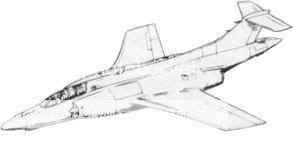What, the plane that had a tendency to spontaneously fall apart midair, and is impossible to ditch from without the pilot getting sucked into the engine, which also happened to block all vision to the rear?
Well, the falling apart was mainly due to the glue problems, since they had to change to untested ones as the factory that made the good glue was bombed out just before production. As far as I recall they eventually got the wood laminates to stay together. ^o^
If we postulate production start a year earlier as suggested, the glue won't be an issue. Heck, we might even see it not made mostly from wood.
Which leads us to the engine and its placement, given a wood fuselage and a single engine, this was pretty much the only option. I guess the experience with the similar styled V-1 might have been a factor, too.
Supposedly the He 162 was equipped with an ejection seat, so clearing the jet intake should be just a factor of correct alignment and blast power.
I totally grant you the loss of visibility to the rear. ^o^
Maybe at the speed of this plane and intended targets/opponents it was deemed to be an acceptable limitation. See also the reports of Me 262 pilots and their tactics, relying on superior speed.
